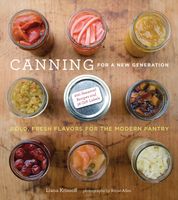Label
All
0
Clear all filters
How sugar preserves food
Appears in
Published 2010
You might notice I didn’t say anything about sugar above. Sugar can act as a preservative if used in quantities high enough that the sugar replaces the microorganism-sustaining water in the food. Standard fruit preserves, jams, and jellies often contain enough sugar to at least slow the spoilage of opened jars, but not enough to stop it completely. Sugar is not, however, absolutely necessary in preserving fruit products in jars (despite what many sources imply). It is possible, for example, to can plain fruit in nothing but water or its own juice: The acid in the fruit, heat-processing, and an anaerobic environment are together sufficient to prevent spoilage. Fruit and fruit spreads canned without sugar tend to taste a little lifeless, it’s true, and will spoil more quickly after the jars are opened, so I recommend using at least some sugar in every fruit recipe here. Sugar is needed only to enhance the flavor of fruit preserves, to increase the quality of preserves (it helps fruit keep its shape in liquid and helps retain color), and to react with the natural pectins in fruit to create a gel.
Become a Premium Member to access this page
Unlimited, ad-free access to hundreds of the world’s best cookbooks
Over 160,000 recipes with thousands more added every month
Recommended by leading chefs and food writers
Powerful search filters to match your tastes
Create collections and add reviews or private notes to any recipe
Swipe to browse each cookbook from cover-to-cover
Manage your subscription via the My Membership page
Best value
Part of
Advertisement
Related Recipes
-
-
-
-
Related Reference
-
-
-
-
Advertisement
The licensor does not allow printing of this title



